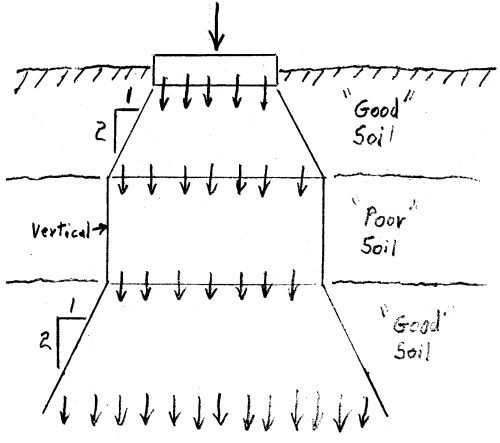TheHayDuke
Geotechnical
Been working on some wind turbine crane pads for a few months now, and I swear the ground is getting progressively worse with every now pad. Generally I've been lucky enough that the bad material is close enough to the surface that the client is willing to simply remove it all and replace it with well compacted gravel but I'm looking to get ahead of the inevitable issue were we get something soft at a depth that isnt feasible to replace.
So I've been looking at different theories of pressure distribution below footings, boussinesq, westergaard, 2:1 etc but all of these methods generally assume a homogeneous material. Maybe I'm off here, but the increased load under a meter of gravel would be less than it would under a meter of a soft clay right? the increased strength/rigidity would cause the load to spread out more is what my gut tells me, but i cant find any literature to support that hypothesis.
I did stumble across a couple papers by Rocscience for a "method of images" they use in their settle3d that does seem to account for differences in rigidity across a layered soil, but they dont seem to have any public information on how exactly that works.
Any experts around have some knowledge to share?
So I've been looking at different theories of pressure distribution below footings, boussinesq, westergaard, 2:1 etc but all of these methods generally assume a homogeneous material. Maybe I'm off here, but the increased load under a meter of gravel would be less than it would under a meter of a soft clay right? the increased strength/rigidity would cause the load to spread out more is what my gut tells me, but i cant find any literature to support that hypothesis.
I did stumble across a couple papers by Rocscience for a "method of images" they use in their settle3d that does seem to account for differences in rigidity across a layered soil, but they dont seem to have any public information on how exactly that works.
Any experts around have some knowledge to share?


![[smile] [smile] [smile]](/data/assets/smilies/smile.gif)